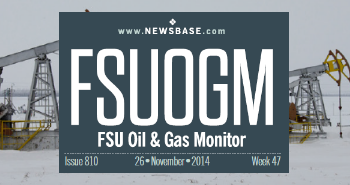The US-led price cap on Russian oil exports has failed and “almost no Russian oil is being sold for less than $60”
The US-led price cap on Russian oil exports has failed and “almost no Russian oil is being sold for less than $60”, the Financial Times reported on November 14, according to Western experts and Russian export data.
In October, "almost none" of the seaborne crude oil shipments adhered to the maximum $60-per-barrel limit set by the G7, the EU and Australia in December of the previous year, as stated by a senior European government official in an interview with the FT.
A tiny volume of oil continues to be sent to Europe to countries in Central Europe that have sanctions exemptions, including Poland, Hungary and Austria that may be paying below the cap. Also as bne IntelliNews reported more than year ago ahead of the imposition of the embargo, some Russian oil companies operate refineries based in the EU and sell themselves their own crude at below market prices as a ruse to reduce their tax payments to the Russian budget, which has had a noticeable impact on the budget revenues this year.
But the main problem is that the Kremlin and Russian companies have successfully almost entirely redirected exports to Asia – mainly China and India – which have ignored the sanctions completely. bne IntelliNews, like many observers, was sceptical the oil price cap could be enforced from the start and recently published an opinion piece saying that oil price sanctions are a spent cannon.
In addition to rerouting its oil exports, the Kremlin has been aided by Western companies, particularly Greek shipping companies, that have simply ignored the sanctions, and especially those operating in the Pacific Ocean. A study from The Peterson Institute for International Economics (PIIE) and Kyiv School of Economics (KSE) found widespread cases of EU-flagged tankers simply ignoring the sanctions.
As a result, Russia’s oil revenues have been recovering in the second half of this year, in both ruble and dollar terms KSE reports, and as predicted by Russian Finance Minister Anton Siluanov after twin set of large budget deficits were reported in December and January, to the point that the Kremlin is now earning more money from oil exports than it was before the war.

The Russian Russia’s budget went back into profit in August (chart) and Ministry of Finance (MinFin) revised its estimate for the full year deficit down from RUB2.9 trillion ($33bn), or about 2% of GDP, to RUB1.45 trillion. At the start of the year, when the twin embargos were introduced on December 5 and February 5, most commentators thought that the deficit this year would be of record size of RUB3-4 trillion or more.
This situation has prompted discussions as part of the twelfth sanctions package that is due to be decided this week, about the need to strengthen the enforcement measures.
To date there has been a minimal effort to enforce the oil price sanctions. The US government decided to impose secondary sanctions on two shipping companies for breaking the oil price cap sanctions for the first time on October 13, but analysts say the White House is unlikely to follow up with wide-ranging measures or strict enforcement, as it is concerned with restricting oil supplies that would send the price of oil even higher, ahead of the US presidential elections slated for next November. As a result, any further oil sanctions are likely to remain largely symbolic.
The sanctions have also barely affected Russia’s oil production, which reached 9.53mn barrels per day in October, the International Energy Agency (IEA) reported this week, which is down from the 11mn bpd Russia was producing on the eve of the start of the war in February 2022. However, that number has been artificially lowered after Russia agreed with the OPEC+ members to voluntarily reduce its output by 500,000 bpd as part of a joint effort to push oil prices higher. After the start of the war a report from Yale predicted that Russia’s oil production would collapse to 6mn bpd as a result of sanctions.
The stricter enforcement measures for the oil price cap are unlikely to make any difference. The original purpose of the price cap sanctiosn was to turn off the spigot of oil revenues the Kremlin has been using to fund its war machine, and that effort has failed.
Global oil prices have rallied in the second half of this year, and another study by PIIE showed that Russia has been charging market rates for most of its oil, all of it well above the $60 price cap.
The future of the price cap is currently a subject of debate the FT reports, with discussions on the topic taking place during the recent US-EU summit in Washington. Advocates argue that the cap is a crucial tool to limit Russia's ability to finance the war in Ukraine, while critics believe that Russia can easily circumvent the cap, rendering it ineffective.



Follow us online